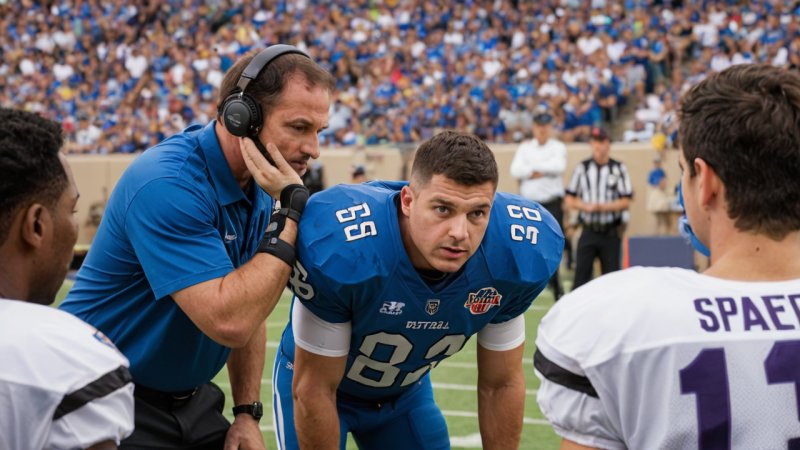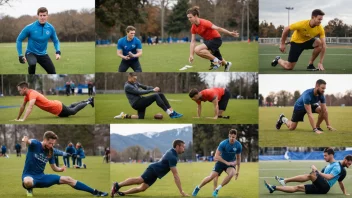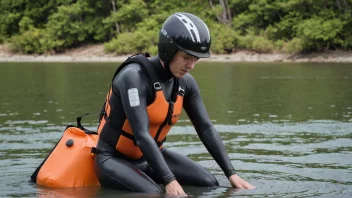In recent years, the conversation surrounding concussions in sports has gained unprecedented attention, especially in contact-heavy sports like football and rugby. As awareness of the long-term effects of head injuries increases, so does the necessity for effective prevention and management strategies. One of the most significant advancements in this realm is the role of concussion spotters during games. These trained professionals serve as an essential line of defense against the potential dangers of concussions, ensuring player safety while maintaining the integrity of the game. This article delves into the function, importance, and operational framework of concussion spotters in football and rugby, exploring how they contribute to player health and the overall safety culture in sports.
What is a Concussion Spotter?
A concussion spotter is a trained individual responsible for monitoring players during games for signs of head injuries. The primary goal of a concussion spotter is to identify potential concussions that may go unnoticed by coaches, players, and medical staff on the sidelines. Spotters are often equipped with a comprehensive understanding of concussion protocols, allowing them to make quick and informed decisions regarding the health of the players. They work closely with medical teams to ensure that any player showing symptoms of a concussion is promptly assessed and removed from play if necessary.
The Importance of Concussion Spotters
The significance of concussion spotters cannot be overstated. With growing evidence linking concussions to long-term neurological issues, it is critical to have a dedicated team member focused solely on monitoring player safety. Here are some key reasons why concussion spotters are essential:
- Enhanced Player Safety: By providing an extra set of eyes on the field, concussion spotters can identify players who may not recognize their own symptoms or may be pressured to continue playing despite feeling unwell.
- Objective Assessment: Concussion spotters offer an unbiased perspective, enabling them to evaluate players based on observed behavior rather than emotional or team pressures.
- Immediate Response: Spotters can relay critical information to medical teams, ensuring that players displaying concussion symptoms receive timely medical attention.
- Education and Awareness: The presence of concussion spotters raises awareness about concussion protocols among players, coaches, and fans, fostering a culture of safety within the sport.
How Concussion Spotters Operate
Concussion spotters typically operate from a designated location, often a booth or area with a clear view of the field. Equipped with communication tools, they are in constant contact with medical personnel. The operational framework of concussion spotters includes the following key components:
Training and Certification
Concussion spotters undergo specialized training that covers concussion recognition, symptoms, and the protocols for assessment and removal from play. Some organizations require certification from recognized bodies to ensure that spotters are well-versed in current best practices.
Game Monitoring
During a game, concussion spotters closely observe players for any signs of distress or abnormal behavior. They watch for instances of players taking hard hits, stumbling, or showing confusion—any of which may indicate a concussion.
Communication with Medical Staff
Communication is crucial in the role of a concussion spotter. They must be able to quickly convey their observations to medical teams, who can then make informed assessments about a player’s condition. This includes utilizing communication devices or hand signals to alert sideline medical personnel discreetly.
Protocol Implementation
Spotters follow strict concussion protocols established by their respective sports organizations. This includes guidelines on how to evaluate suspected concussions and the process for removing a player from the game. The protocols ensure that the health and safety of the players remain the top priority.
Challenges Faced by Concussion Spotters
While the role of concussion spotters is pivotal, they also encounter several challenges:
- Limited Visibility: Depending on the venue, spotters may have limited sightlines or face obstructions that can hinder their ability to monitor the game effectively.
- Player and Coach Pressure: Spotters may feel pressure from players or coaches to overlook signs of concussion, especially in high-stakes situations where winning is prioritized.
- Need for Education: There is often a lack of understanding about the role of concussion spotters among players, coaches, and even some medical staff, which can undermine their authority and effectiveness.
Future of Concussion Spotters in Sports
As sports organizations continue to prioritize player safety, the role of concussion spotters is likely to evolve. Future advancements may include:
- Integration of Technology: Utilizing technology such as video analysis and wearable devices to monitor player health and activity levels in real-time could enhance the effectiveness of concussion spotters.
- Increased Training Opportunities: Expanding training programs to include emerging research on concussions and their long-term effects will prepare spotters to handle complex situations.
- Collaboration with Research Institutions: Partnering with medical researchers could lead to improved protocols and better understanding of concussions, driving innovation in player safety practices.
Conclusion
The emergence of concussion spotters has marked a significant stride toward ensuring player safety in contact sports such as football and rugby. Their dedicated observation and quick communication with medical staff play a crucial role in identifying and managing potential concussions. While challenges exist, the importance of their role cannot be ignored. As we look to the future, continued emphasis on training, technology integration, and education will strengthen the effectiveness of concussion spotters, ultimately contributing to a safer sporting environment. By prioritizing player health over competition, sports organizations can foster a culture that values safety and recognizes the significance of preventing long-term health issues associated with concussions.






